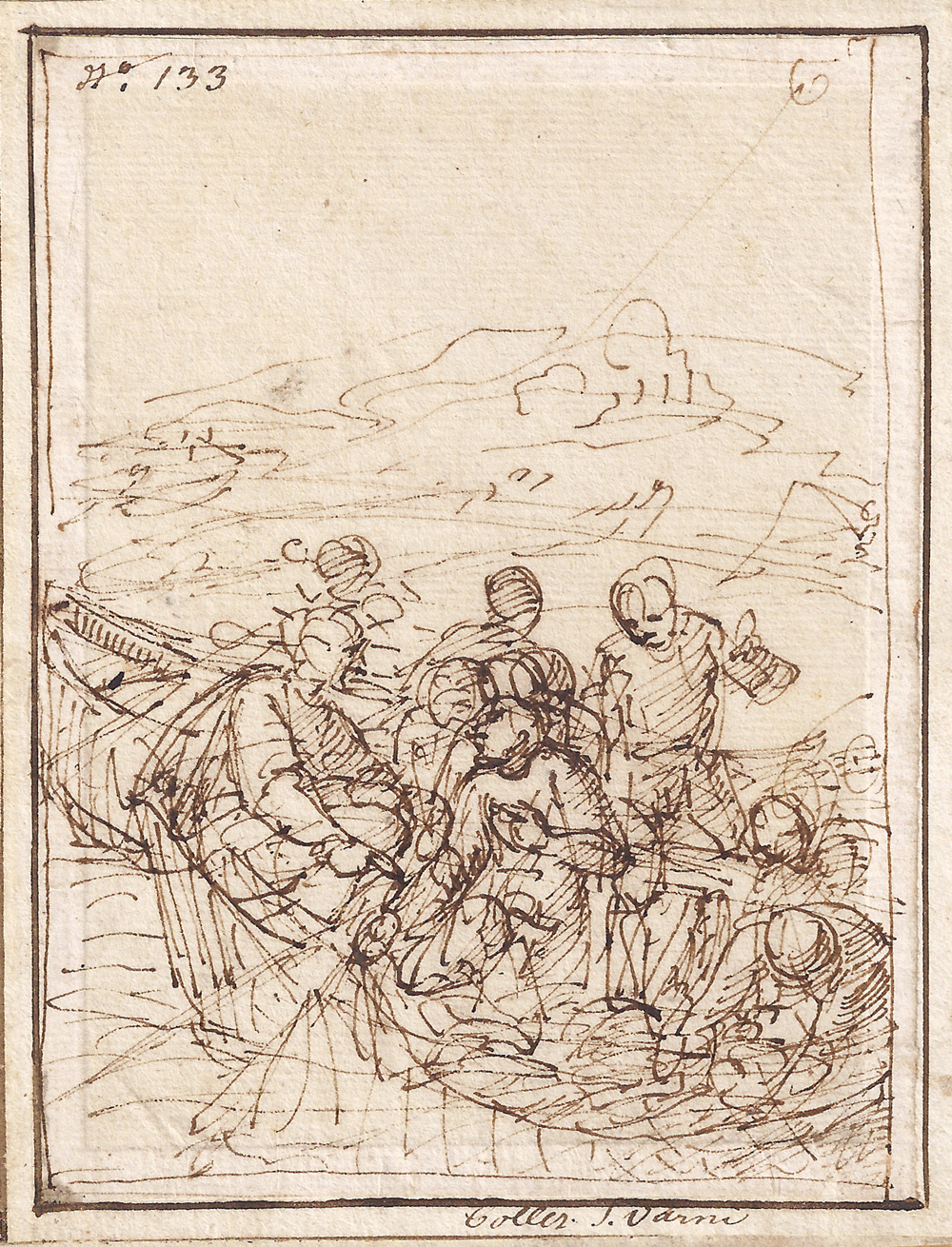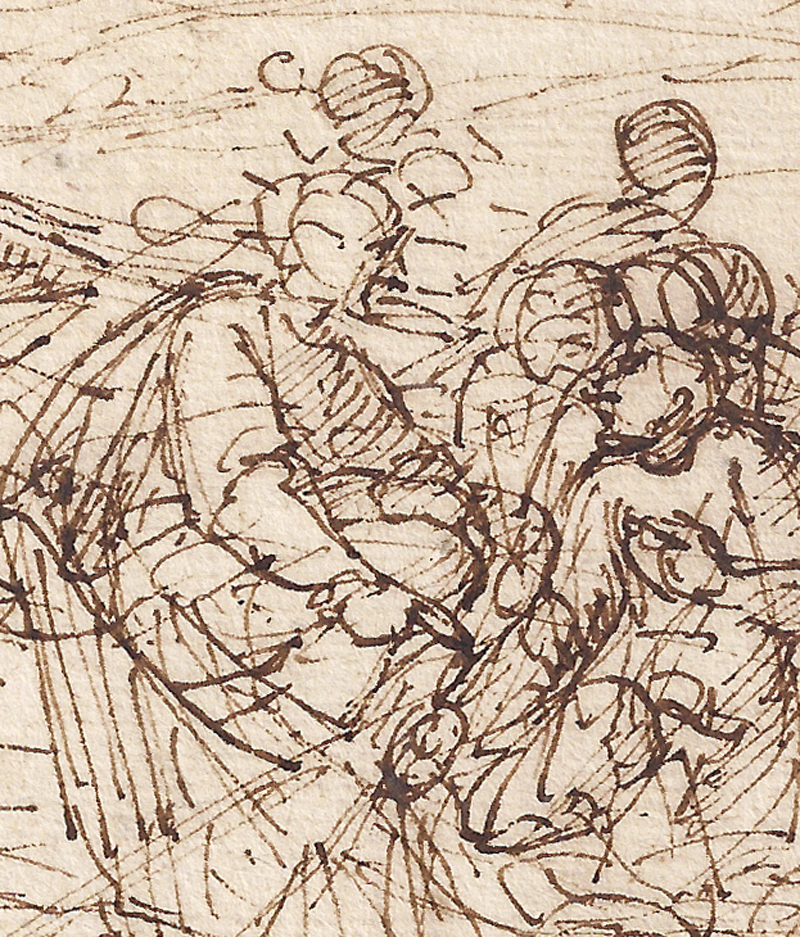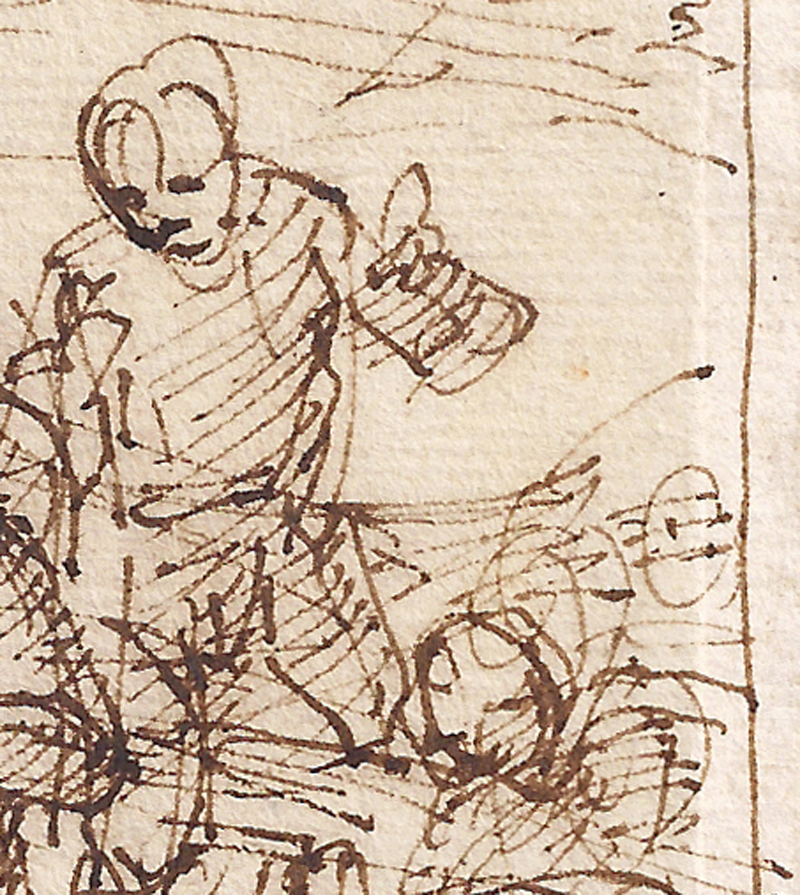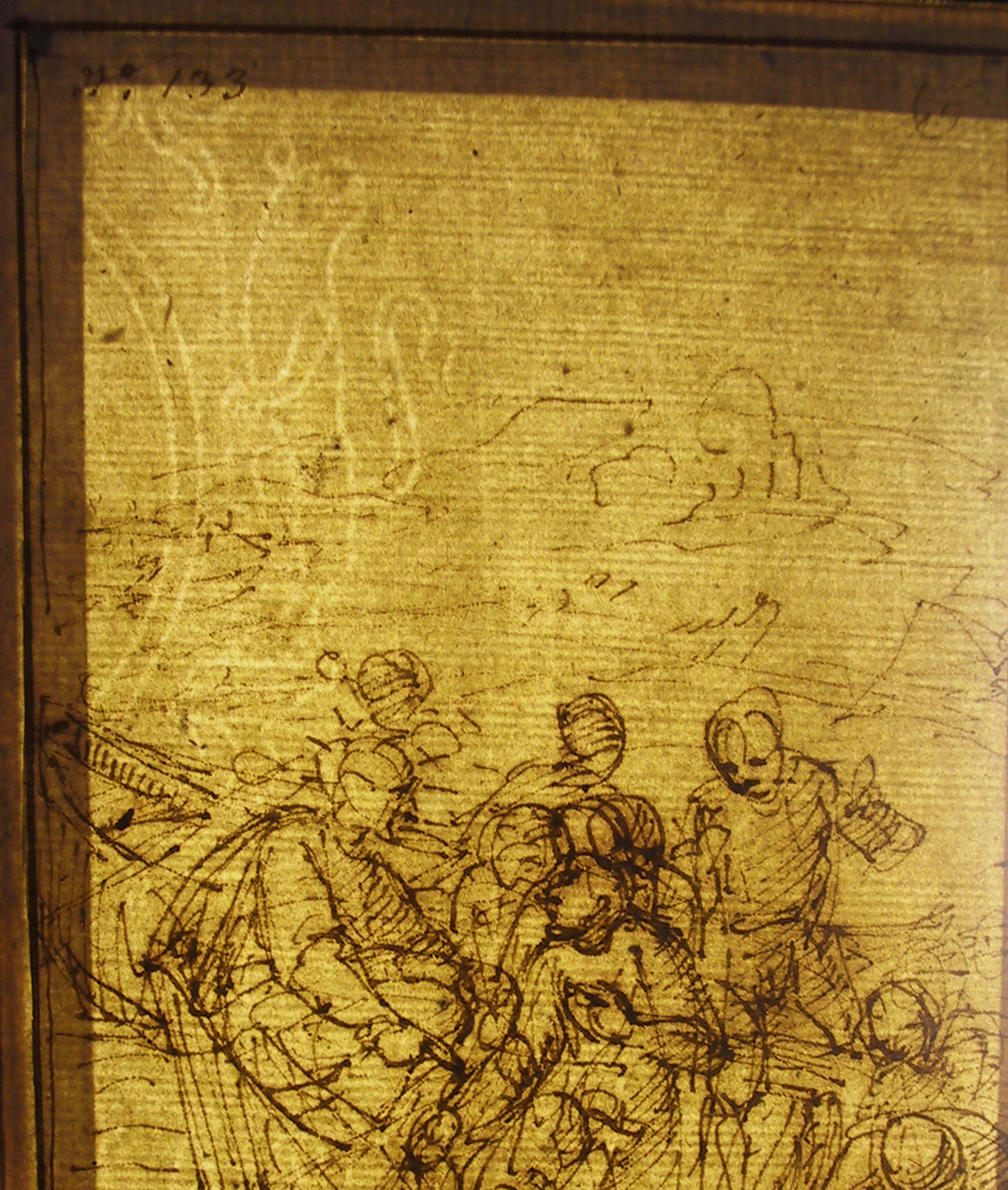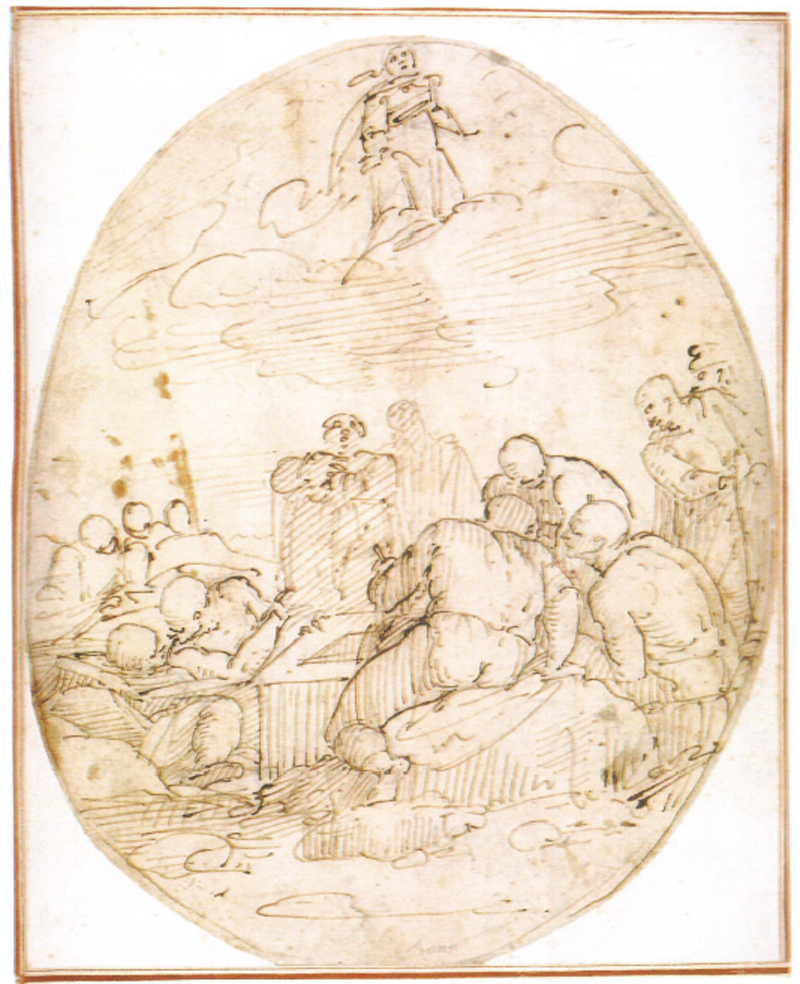GIULIO BENSO (Pieve di Teco 1592 – 1668 Pieve di Teco)
Giulio Benso (Pieve di Teco 1592 – 1668 Pieve di Teco)
The Miraculous Draught of Fish
Pen and brown ink, brown ink framing lines, partial watermark shield with rampant lion, 135 x 101 mm (5.3 x 4 inch); laid down on supporting sheet of paper with framing lines in pen and brown ink
Provenance
- Santo Varni (1807–1885), Genoa (Lugt 3531), with associated inscriptions ‘No. 133’ and ‘Collez. S. Varni’ (pen and brown ink)
- Santo Varni sale, Boisgirard and Van Heeckeren, Paris, 14 December 1981, lot 2
- Private collection, Paris
***
Born at Pieve di Teco near SanRemo at the beginning of the 17th century, Giulio moved at an early age to Genoa around 1605, here he sought the protection of Gian Carlo Doria, in whose household he found lodgings.1 On Doria’s recommendation, Benso was apprenticed to Giovanni Battista Paggi (1554–c.1627), whose workshop was one of the largest and most successful in Genoa at the time.
Following Paggi’s death, Giulio went to Weingarten in Germany, where he began a long collaboration with the priest Gabriel Bucelin (1599–1691) to redecorate the Benedictine Abbey in the town. In the period between 1629 and 1667, Benso sent more than sixty pictures to Bucelin, which well document the artist’s stylistic development over this long period. Perhaps his most productive period were the 1630s in Bologna; as one of the city’s leading purveyors of large-scale fresco decorations, he ran into open competition with Ansaldo (1584–1638).
The highly distinctive handling of the present sheet, with the groups of slightly diagonal hatchings, and the swiftly drawn circular faces, can for instance be compared to a drawing by Benso of the Assumption of the Virgin in the print room of the Staatsgalerie Stuttgart (fig.).2 The extremely loosely drawn landscape background is also comparable to the Stuttgart drawing.
The drawing was owned in the nineteenth century by the Genoese sculptor, archaeologist and collector Santo Varni (1807–1885), a pupil of Giuseppe Gaggini and of Lorenzo Bartolini.3 He assembled a collection of some four thousand drawings, many of Genoese artists. Because of his efforts the studio holdings of the De Ferrari and Piola (‘casa Piola’) families was saved for posterity. Many of Varni’s drawings passed into the collection of Giuseppe Vallardi (1784–1861); others remained together until sold in Paris in 1981. Our drawing was included in this group.
SOLD
1. For the artist, see for instance N. Turner, From Michelangelo to Annibale Carracci. A century of Italian drawings from the Prado, Madrid 2008, p. 190.
2. Pen and brown ink, oval, 250 x 201 mm, inv. no. 39/331; C. Thiem, Italienische Zeichnungen 1500-1800. Bestandskatalog der Graphischen Sammlung der Staatsgalerie Stuttgart, Stuttgart 1977 (reprint 1992), pp. 24-25, cat. no. 7, repr.
3. For the collector, see: C. Cavelli, 'Il « museo » dello scultore Santo Varni : vidence e vicissitudini testamentarie. Le opere acquistate dal Commune di Genova', Bolletino dei Musei Civici Genovesi, XI, 1989, nos. 32-34, pp. 55-75.
